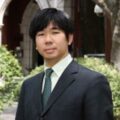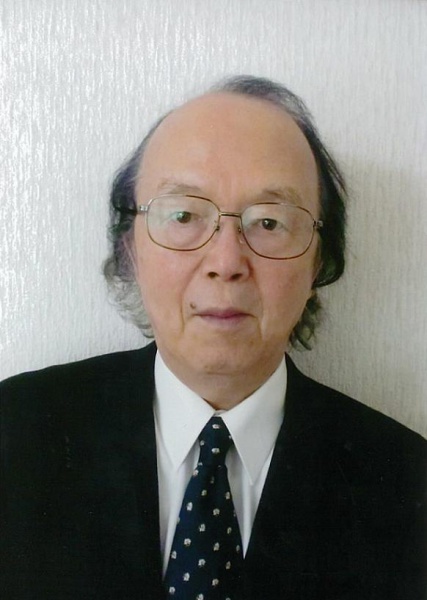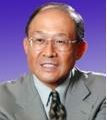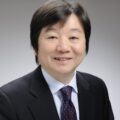(ASIA PIVOT) Roles of East Asia and Japan in 2032 — U.S. Supremacy to Remain Unshaken

Kitaoka Shinichi
I am wondering how the international order will change 20 years from now. Will China as an emerging power become a hegemonic nation? Where will Japan stand in international society? In this essay, I will consider the outlook for power politics in East Asia and ways toward Japan’s rehabilitation as a global actor.
History is my specialty. Historians analyze past events but do not make future projections. Nevertheless, historians know one thing about the future, namely that no one knows about the future.
In 1945 when Japan lost the last war, was there anyone who could predict the nation’s rapid economic growth that began a little more than 10 years later? Who could predict Japan would host the Summer Olympics 19 years later and the World Exposition in Osaka 25 years later?
In 1868 when the Meiji Restoration took place, was there anyone who could predict the abolition of the Han System and establishment of the Prefecture System three years later in 1871? Who could forecast that the class of samurai warriors would be abolished eight years later in 1876 by ending stipends for them and introducing a decree that banned the wearing of swords? Who could predict Japan could win its war with China in the Qing Dynasty 26 years later and with Russia 36 years later?
The future is unpredictable.
Differences between U.S. and China
Lots of medium- and long-term predictions are being made around the world, with attention focused on the decline of the United States and the rise of China.
The U.S. National Intelligence Council, which oversees intelligence organs and provides policymakers with information, released its Global Trends 2030, a predictive analysis of the world economy 15 to 20 years down the road, on Dec. 11, 2012, predicting that China will become the world’s biggest economic power in 2030 and that the United States will maintain the biggest influence among comparable major powers but will not be the sole superpower due to the economic development of China and India. No country, whether the United States, China or any other, will be a hegemonic power, it said.
There are various views within China. For example, Wang Jisi, dean of the School of International Studies at Peking University who is known as a cool-headed pragmatist, says China will need several decades to 100 years to catch up with the United States in the real sense of the term but criticizes the United States for not treating China fairly as it takes the supremacy of democracy for granted (as reported in the Asahi Shimbun newspaper of Oct. 5, 2012).
But Yan Xuetong, dean of the Institute of Modern International Relations at Tsinghua University who is known as a foreign policy hardliner, says China already has equal power with the United States and that there is no cooperative relationship between the two nations but the management of conflicts (Asahi Shimbun of Dec. 12, 2012). Yan argues that the morality, like virtue, found in ancient Chinese thought is superior to American democracy.
I see the relationship between the United States and China in the following context.
First, the United States and China are comparable in terms of national land area but cultivation and inhabitation are possible in more than 80% of the United States, compared with less than 15% for China, which has lots of mountains and deserts. In effect, the United States is more than five times as spacious as China.
Secondly, China’s productive-age population will peak in a few years and then begin to decrease. According to a moderate-range estimate by the U.N. Department of Economic and Social Affairs, China’s total population will begin to decrease around 2030. It will not be easy to maintain economic growth with a decrease in the productive-age population and growth will become more difficult during a decrease in total population.
In contrast, the U.S. population is forecast to near 400 million in 2030 and keep increasing until around 2050.
Thirdly, the military supremacy of the United States will remain unshakable. As armed strength is the result of accumulation, it will take several decades or may even be impossible for China to surpass the United States in entire military capacity even if its defense budget tops that of the United States in a single year. China may become comparable with the United States in military might in the region but will effectively be unable to surpass it on a global basis.
Fourthly, the United States maintains an overwhelming position in the field of science and technology on which the economy and military are thought certain to keep increasing their reliance. U.S. universities are at the center of the field as they spend a huge amount of funds on large campuses to lure talented scholars from all over the world. It seems impossible for any other country to catch up with the United States in this respect.
Political systems form the fifth point. The United States used to be a country of “WASPs” — White Anglo-Saxon Protestants. The belief that it would be impossible for a non-WASP person to be elected U.S. president was upset by the election of John F. Kennedy in 1960. President Jimmy Carter was elected from the Deep South as a follower of the Baptists, a somewhat unconventional faith compared with those of past presidents.
An African-American was elected U.S. president in 2008 and Mitt Romney, who follows the Mormon faith, staged a strong fight in the 2012 presidential election.
The U.S. political system has its strength in accepting minorities. Although it becomes unstable from time to time, as in the case of President George W. Bush’s inclination toward unilateralism or extreme views such as those of the Tea Party, it often regains its composure in the end.
In contrast, the trouble-shooting capacity of China’s political system seems high in the near term but has undeniably left Chinese society in an explosive situation by letting social discontent accumulate. The days of one-party rule may be numbered.
Aside from this comparison of national power, let us analyze the international influence of the two countries.
The equality of sovereign states is a principle of the current world. As a rule established after World War II, furthermore, disputes between countries are generally settled peacefully.
China used to be at the center of East Asia in the pre-modern age. East Asian nations accepted the superior position of China and pledged to be submissive , which in turn protected them. Neighboring countries paid tributes to China and received much larger returns from it.
It seems that a hierarchical international order of this kind remains quite strong in Chinese sentiment. China, which called for the principles of equality, mutual benefit and non-intervention in internal affairs in the 1950s, is now demanding due treatment as a first-rank country, as seen in remarks by the above-mentioned professors.
The rule of law does not exist in China in a deep-rooted sense. Traditionally, China had no laws to rein in its emperors. Even today, no law exists in China to control its supreme leader. In the East and South China Seas, China sends fishing vessels into waters regarded by other countries as their territories or exclusive economic zones and protects them with warship-converted “vessels for public services” — effectively making such waters its own territories or exclusive economic zones.
This kind of practice evidently runs counter to the principle of settling disputes peacefully. The idea of respecting international law does not exist or is extremely weak in China.
Of course, big powers have often settled problems by force rather than by law. It is widely known that the United States has not ratified the U.N. Convention on the Law of the Sea. In a considerable number of cases, it has used international regulations arbitrarily and forced its position on other nations.
Among countries that advocate the equality of sovereign states and peaceful solutions to disputes in principle, there is a great deal of difference between those that often do not comply with them in actual deeds and those that do not respect them from the beginning. I think the difference between the United States and China is undeniably large.
Multilateral Alliance in the 21st Century
Where does Japan stand under these circumstances?
Yan Xuetong stresses that Japan should define itself as a nation in Asia and sever its subservient relationship with the United States and that China will not treat Japan improperly if it does so. This idea represents a hierarchical sense of order maintained by the blessing of the strong.
What does being a member of Asia mean? Japan has long said “no” to Chinese superiority. In East Asia, it is virtually the only country that has not regarded China’s superiority as self-evident. Japan has a tradition of the rule of law. In Japan, where the separation of power and authority was established in ancient days, there was a long period of time during which emperors and shoguns were not almighty.
To control various political actors, laws were established and respect for regulations became a tradition. Although there was a deviation in international relations in the 1930s, Japan has generally been most faithful to the principle of settling disputes peacefully, and it has also respected human values such as dignity, freedom and safety for a long time.
According to economic historian Angus Maddison, China was the world’s biggest economic power in the 1820s and was followed by India. Is the world returning there?
I deny it. The 19th and 20th centuries represented the history of superiority established by Europe and the United States (plus Japan) but were not limited to it because they created a history in which the concept of freedom, democracy, human rights and the rule of law was founded and accepted widely. For international relations, the two centuries paved the way toward the idea of settling disputes peacefully, partly as a result of the two world wars.
Even if Asian nations rise in power in the international order of the 21st century, their growth must be based on these principles.
This point of view is demonstrated by Myanmar, which was considered to have been China’s protégé until recently but now appears to be breaking away from China.
Once a country gains the status of a sovereign state, it does not want to return to the position of subservience to a big country. This course of action is not easy to take for a country which is close to China and has a population of only several million, such as Laos and Cambodia. But Myanmar, with a population of 65 million, Vietnam with 80 million and Indonesia with more than 200 million do not readily accept China’s superiority, and nor does the Philippines.
Although Thailand is under the influence of China, the combined population of the above-mentioned Southeast Asian countries will top 500 million in 2030, nearly half of China’s. In the south, there is India whose population is forecast to exceed that of China at more than 1.5 billion. India, like many others, attaches importance to the rule of law.
During the Spring and Autumn Period and Warring States Period in China, six states located east of Qin — Han, Wei, Zhao, Yan, Chu and Qi — formed an alliance vertically to counter the Qin Dynasty rising from the west. But Qin drove a wedge into the alliance by proposing a tie-up with each of the six to create a horizontal alliance and eventually brought the whole country under its control. This is the historical event from which the expression “gassho renko” (forming a multi-party alliance against a powerful enemy and an individual alliance with a powerful enemy) originated.
What is taking place in East Asia looks similar to it. China gives generous trade benefits to countries obedient to it but produces disadvantages for those that are not. There are various ways of doing this. Bananas imported from the Philippines become worthless as a delay in customs-clearance procedures spoils them. A small change in formalities can deal a blow to other countries. China hardly recognizes that this kind of deed is wrong and that political and economic issues should be treated separately.
Disputes exist even between Japan and Australia, such as the whaling problem. But it is unthinkable that Australia would restrict exports of iron ore. This kind of attitude is the foundation of modern international relations.
The presence of the United States as a superpower is behind the modern multilateral alliance. In the north, Russia, which is still a major military power, exists, and Australia is somewhat southeast of it. India in the south will become the world’s most populous nation in the near future. As far as the balance of power is concerned, China today is far short of the position attained by the Qin Dynasty.
What counts now is the principle of international relations. A liberal international order, which respects the rule of law and lets competition take place, is a much more effective system than a hegemonic country attempting to tame neighboring nations through its selective blessings.
For these reasons, a hierarchical order with a pre-modern China at the center is unlikely to be established in East Asia unless in extreme circumstances. But a liberal international order cannot be achieved unconditionally. As a minimum requirement, the nations concerned must strive to respect the order for the sake of their development.
Japan, as the biggest economic and military power in the multilateral alliance, holds the key. It is indispensable for Japan to rebuild its economy, strengthen its defense capacity and promote tie-ups with neighboring countries. While implementing measures to arrest deflation, accelerate economic growth, and reduce government debt through tax hikes and cuts in social security benefits, Japan must at least create a National Security Council, change the interpretation of its Constitution to enable the exercise of the right to collective self-defense, assume greater responsibilities by changing its defense-only policy and sharing roles with the United States, and promote the modernization and efficiency of its equipment by boosting its defense budget.
One thing that should be taken into account is the need to draw a line between realism and an ideological tilt toward the right. To establish a National Security Council, change the defense-only policy, increase the defense budget to a certain extent and abolish or amend Paragraph II of Article 9 of the Constitution (non-possession of armed forces) are options that can be commonly made in other countries and are nothing peculiar. Although there are people both at home and abroad who criticize these policy moves as a drift to the right, they are wrong.
But assertions that Japan has not invaded other countries or is superior to neighboring nations not only raise questions about facts but also hinder solidarity with such countries. They represent an ideological drift to the right, which should be avoided for the sake of not only Japan but also the world.
As a decisively important point, the order of East Asia must be maintained until 2030 when the momentum of China will slow as a result of the factors discussed. This view does not regard China with hostility as China must be able to fully develop under this kind of order. It is nothing but an alliance aimed at prompting China to understand it and become a responsible major power.
At the beginning of this essay, I referred to the Meiji Restoration and postwar reconstruction. There were two conditions that enabled Japan to develop beyond projections in those days, namely an increase in population and the presence of excellent leadership.
Japan should earnestly address its population problem, and not allow itself to become neglected or even a diluted presence in world affairs. There is no quick remedy to this problem. A population increase cannot be readily attained. But there is a big difference between total fertility rates of 1.2 and 1.8. All possible measures should be taken to halt the population decline, even if only slightly, and achieve an increase if possible.
Political stability needs no explanation. There was a strong leadership, led by Toshimichi Okubo and Hirobumi Ito, in the Meiji Period. In the postwar era, prime ministers like Shigeru Yoshida, Nobusuke Kishi, Hayato Ikeda and Eisaku Sato led Japan.
Major shakeups in the process of the Meiji Restoration and great changes after the defeat in the last war were necessary to help revive such political stability. Borrowing Joseph Schumpeter’s expression, they may be described as “creative destruction” in politics.
The international order in 2032 will definitively be affected by whether such creative destruction will be possible or not.
====================
Translation of an article (pages 20-26) from Diplomacy Vol. 17 (published by the Ministry of Foreign Affairs, planning and production by JIJI Press Publication Service Inc.)
Shinichi Kitaoka was born in 1948 and graduated from the Faculty of Law at the University of Tokyo in 1971. He has held such posts as professor at the College of Law and Politics at Rikkyo University, professor at the Faculty of Law at the University of Tokyo, and ambassador of Japan to the United Nations. Among awards he has received are the Suntory Prize for Social Sciences and Humanities, the Yomiuri Prize for Opinion Leaders and the Yoshino Sakuzo Award. His recent books include “The Collapse of Japanese Politics: How to Overcome a Third Loss in War” (Chuokoron-Shinsha Inc., 2012) and “The Japanese Army as Bureaucracy” (Chikumashobo Ltd., 2012). He was awarded the Medal with Purple Ribbon in 2011.




